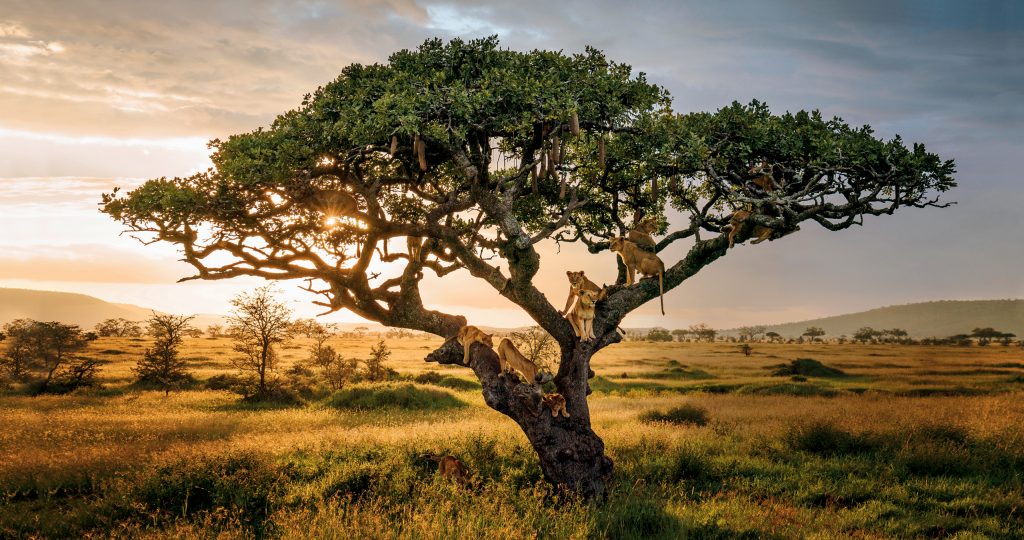Serengeti National Park
- Home
- Serengeti National Park
Serengeti National Park
Serengeti National Park, located in Tanzania, is a world-renowned wildlife sanctuary and a UNESCO World Heritage Site. Spanning over 14,750 square kilometers, it is best known for the annual Great Migration of wildebeest and other herbivores, making it one of the most spectacular natural events on the planet. The park’s vast, sweeping landscapes are characterized by endless plains, savannahs, and acacia-dotted hills, creating an iconic African safari setting.
The Serengeti is home to a diverse array of wildlife, including the “Big Five” – lions, elephants, buffalos, leopards, and rhinoceros. The park’s rich biodiversity also encompasses numerous species of birds, reptiles, and smaller mammals. Visitors can witness these incredible creatures in their natural habitats through game drives, where skilled guides navigate the park’s extensive road network to ensure optimal wildlife viewing.

The Serengeti’s ecosystem is crucial for the survival of various species, and its preservation is a testament to Tanzania’s commitment to conservation. The park hosts various conservation programs and research initiatives aimed at protecting its unique flora and fauna. Visitors can learn about these efforts and gain a deeper understanding of the delicate balance that sustains this remarkable ecosystem.
Beyond wildlife, the Serengeti offers a cultural dimension with interactions with the Maasai people, who have coexisted with the wildlife for generations. Travelers can experience their traditions, dances, and unique way of life, providing a holistic view of the region’s heritage.
Accommodations within and around the Serengeti range from luxury lodges to comfortable tented camps, allowing visitors to immerse themselves in the natural surroundings while enjoying modern comforts. The Serengeti National Park stands as a symbol of Africa’s natural beauty and the importance of preserving these pristine environments for future generations to appreciate and cherish.
